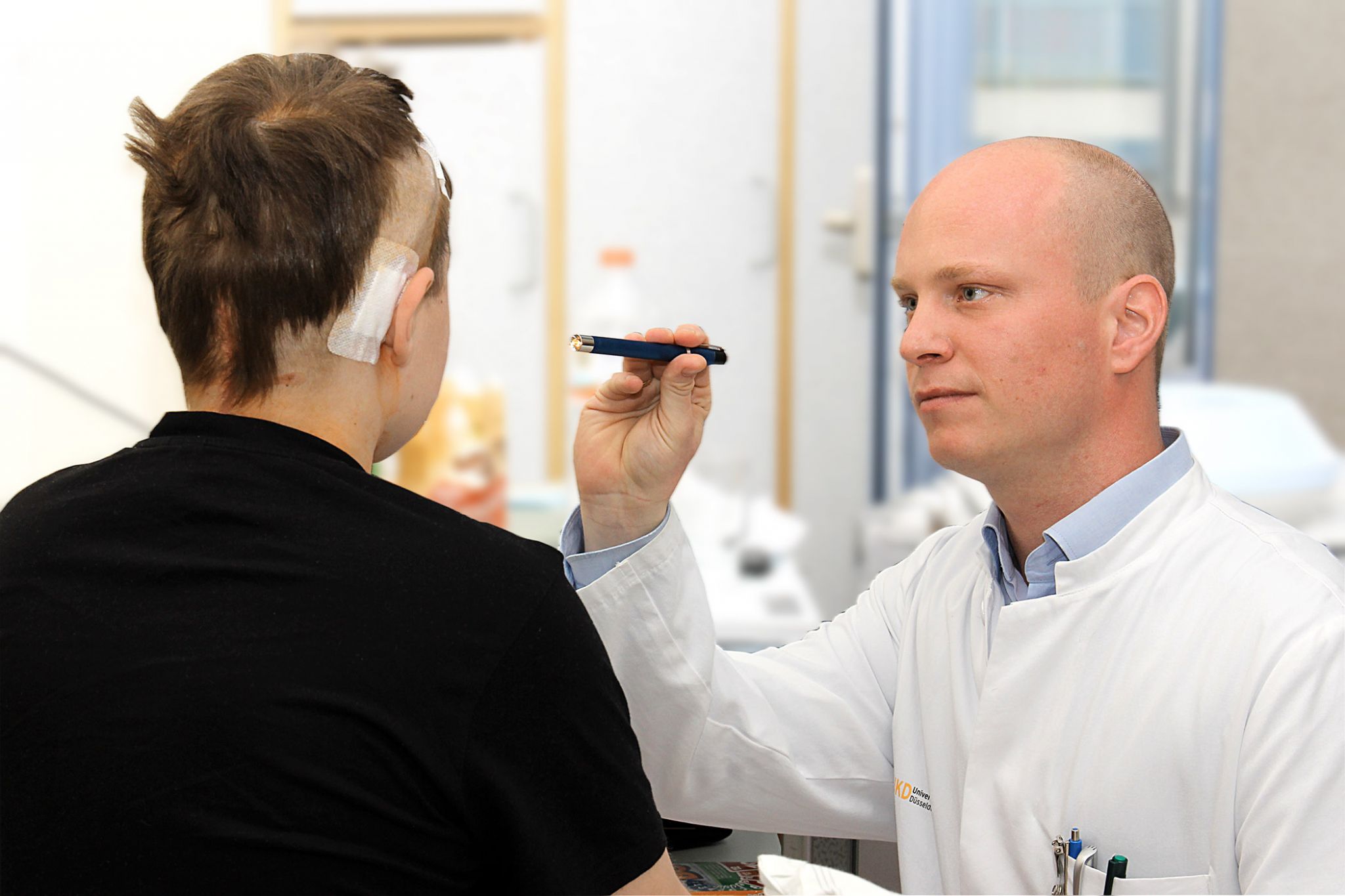06/06/2018
Print PageThoroughly understanding and fighting brain tumors

Medulloblastoma is a rare but particularly aggressive type of cancer that attacks the cerebellum. It occurs particularly frequently in children. Adults are rarely affected. This cancer eats its way through the brain incredibly fast, which means patients and their physicians do not have much time. It is important to select the correct treatment quickly. And that is precisely where the problem lies.
“Each tumor is unique, so each patient needs customized treatment,” Marc Remke explains. He knows what he is talking about – he not only heads the “Pediatric Neuro-Oncogenomics” research group, but also spends part of every day caring for patients on the cancer ward at Düsseldorf University Hospital.
The different types of tumors are difficult to distinguish visually. Even the best neuropathologists can only categorize different types of medulloblastoma very roughly when examining tissue samples under the microscope – not enough to assign patients to a particular treatment group. “The really important information is found inside the tumor cells,” the 36-year-old medic explains. “That’s why we need to take a closer look at the cell biology.”
There are four subgroups of medulloblastoma. As a PhD student, Remke was involved in classifying them. Two of the subgroups are called Wnt and SHH. They are named after the genes that grow out of control in each case. The other two are currently called Group 3 and Group 4.
In these subgroups, scientists do not yet know which metabolic pathways are involved. Analyzing the tumors’ genome (DNA) or transcriptome (mRNA) produces ambiguous results. The underlying changes are too numerous and inconsistent and the relevant differences remain hidden.
Because of this, Marc Remke is now investigating the protein expression itself. “All studies on DNA and RNA are ultimately designed to tell us something indirectly about the amount and activity of proteins,” says Remke. “We are examining that directly.” Using this approach, he has managed to discover which signaling pathway is overactive in Group 4 medulloblastoma.
Patients with these tumors may soon be able to benefit from new treatment concepts. “Molecular target structures that are to be targeted by therapeutic agents should be present in all tumor cells because then they are less likely to develop resistance. Brain tumors, however, are not a homogeneous unit at the genetic level – there are big differences within the same tumor,” says Remke, describing a key obstacle to be overcome in developing targeted therapies. “By contrast, the distribution of proteins within the same tumor is much more homogeneous. Here, we can attack the tumor at the root and spare patients additional biopsies.”
Another of Remke’s research projects concerns AT/RT brain tumors. This is another extremely aggressive type of cancer that is found almost exclusively in newborns and infants. Average survival is currently less than two years.
Remke’s research group hopes to discover new active substance molecules that can destroy tumor cells in a targeted manner without damaging healthy tissue. Once again, the aim here is to treat different subgroups of AT/RT differently.
For Remke, the clinical relevance of his research findings is particularly important. It is why he chose to pursue a career as a young investigator group leader within the DKTK, so that he could combine patient care with his research. The things he hears during oncology consultations or reads in patients’ notes provide inspiration for his research work. “I can have a say in directing medical research, which directly helps my patients,” says Remke, explaining his motivation.
Until now, however, very few medical students opt for this career path. One of the reasons for this is that it requires a huge amount of time. Marc Remke was released from his clinical duties so that he could set up his laboratory. Now he is completing his specialist training while leading a research group of 12 people. “I deliberately chose this career path in the DKTK,” the young physician says, “because it offers unique access to a network of excellent scientists and clinician scientists and outstanding future prospects for my career.”